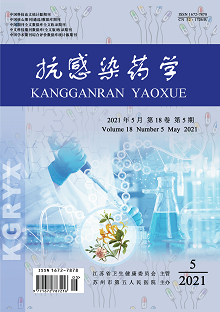ZHOU Hang, WU Shi-ping, XIE Ming, JIAN Yue-huang, HU Dong-hua, LIU Yue-hui
Objective: To investigate the distribution characteristics and drug resistance to pathogenic bacteria in urinary calculi patients with urinary tract infection. Methods: Clinical data of 350 patients with urinary calculi admitted to our hospital from January 2019 to June 2020 were selected. The results of bacterial culture and drug sensitivity test in clean middle urine samples were counted, and the distribution characteristics of pathogenic bacteria and drug resistance to urinary tract infection were analyzed. Results: Of the 350 patients with urinary calculi, 79 patients developed urinary tract infection (22.57%).In the urine samples of patients with urinary tract infection, 79 strains of pathogenic bacteria were detected, in which Gram-negative bacteria (68.35%), Gram-positive bacteria (17.72%), fungi (11.39%) and Ureaplasma infection (2.53%) were detected. Based on the results of drug sensitive test of Gram-negative bacterium E. coli to piperacillin, ampicillin, amoxicillin, ticarcillin, moxifloxacin and ciprofloxacin, have higher percentages of compound sulfamethoxazole (greater than 70%), of the imine southern culture, E.faecalis to amoxicillin clavulanic acid potassium, the sensitive rate of amikacin was high (greater than 85%); Enterococcus faecium in Gram-positive bacteria to penicillin, gentamicin, ampicillin and oxacillin, have higher percentages of schering (greater than 70%), with nitrofurantoin, vancomycin, ampicillin-sulbactam sodium, piperacillin-tazobactam sodium, linezolid, levofloxacin, moxifloxacin sensitive rates were high (greater than 78%). Conclusion: The pathogens of urinary calculi accompanied by urinary tract infection were mainly caused by Gram-negative bacteria, some patients were caused by Gram-positive bacteria and fungi, and a few patients were caused by ureaplasma infection. In order to ensure good antibacterial effect, antibacterials should be selected reasonably based on the results of drug sensitivity test.
